Interview with Liberal Arts Communicator Chie Kamino
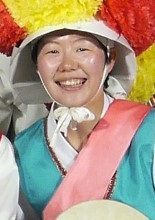
The National Institutes for the Humanities (NIHU) are facilities engaged in research on human culture from diverse perspectives aiming for a better understanding of coexistence among people and harmony between nature and humanity. In order to deepen research in the humanities, it is critical to facilitate communication between researchers and society.
As part of this effort to enhance such communication, NIHU holds various events for the general public and also provides training programs for liberal arts communicators who facilitate and engage in “two-way communication” between experts and non-experts.
Who are these “liberal arts communicators?” What kinds of activities do they engage in? This series of articles provides answers to those questions.
This edition features Dr. Chie Kamino, who assumed the position of liberal arts communicator at NIHU’s National Museum of Ethnology from February 2021.
You specialize in ethnomusicology. Please tell us about your research.
I have been studying music and the performing arts with a primary focus on Korea and Japan. In 2006, I studied at Ewha Womans University in South Korea on an undergraduate exchange program. Through the university’s club activity, I encountered the traditional Korean performing art called nongak (also known as pungmul), and since then this has been my subject of research.
Nongak is a form of folk art in which performers dance while playing drums, hand-held gongs, and other percussion instruments. It was originally performed in local communities to boost morale during farm work or to drive away evil spirits on such special occasions as the first month of the lunar New Year (see video: Kankoku no kyū shōgatsu no mura matsuri [South Korean Village Festival Celebrating the Lunar New Year]). There also were troupes that would visit neighboring communities or travel around the country with a repertoire consisting of nongak, mask drama performance, and acrobatics.
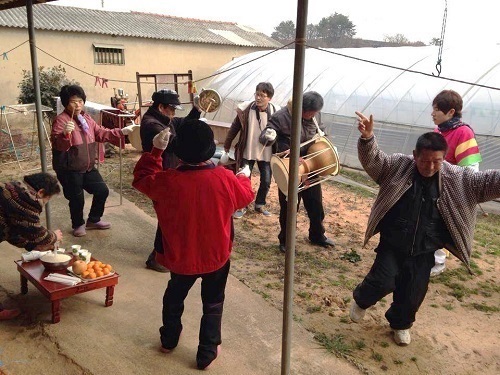
A nongak performance at a village festival celebrating the lunar New Year
(Gochang County, North Jeolla, South Korea, 2013)
In modern and contemporary times, nongak has changed significantly, evolving into a professionally staged form of performing art that in turn brought into being yeoseong nongakdan: commercial nongak groups comprised of young women - a groundbreaking change in the previously male-dominated world of nongak. The first all-woman troupe was founded in Jeolla Province during the late 1950s, and after the troupe began to tour around the country, similar groups later formed in other locales and gained great popularity up to the 1970s.
My doctoral dissertation explored the life history of the late Na Geum-chu, a leading yeoseong nongakdan performer, as well as the style and transmission of her performances to younger generations. Whereas previous nongak studies use Korea’s regional culture as the basis of their discussion, my focus on a modern-age performer enabled me to examine the interregional activities of professional performers and the impact that an individual artist’s musical taste and technique has had upon nongak as a genre. The major change that this performing art experienced over time - its beginnings as a local ritual and the rise of professional performers and all-women troupes - is crucial to any discussion of contemporary nongak.
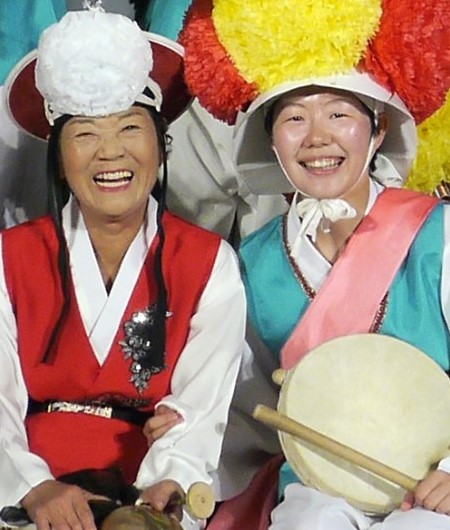
With the late Na Geum-chu (at left)
(Chuncheon City, Gangwon, South Korea, 2013)
After receiving my PhD, I have pursued comparative research on the kadozuke performing arts of Japan and Korea, a tradition in which performers go from home to home to offer their ritual performances to the deities of houses. (“Kadozuke saikō: Ie o tazuneru geinō no shosō” [Reconsidering Kadozuke: Diverse Aspects of the Performing Arts That Involve Visits to Homes], Gekkan Minpaku [Minpaku Monthly] 42:10 (2018), 2–9). Since 2017, my research has revolved around Japan’s Ise-daikagura; an ancient folk art in which troupes of performers—who continue to travel around western Japan today—make their living by offering shishi-mai lion dances and acrobatics to ward off misfortune at the homes they visit. (Chie Kamino, “Ise-daikagura to korona-ka no Nihon o aruku” [Traveling with the Ise-Daikagura Troupe Around Pandemic-Struck Japan]. Tokusetsu saito COVID-19 to fīrudo wākā [Special Website: COVID-19 and Field Workers]. Research Institute for Languages and Cultures of Asia and Africa. https://fieldnet-sp.aa-ken.jp/589 (accessed June 26, 2021).)
Korea, too, used to have similar professional performing arts groups that go from village to village to give performances. But today, only scattered traces of that tradition remain around the country. My current Grants-in-Aid for Scientific Research (KAKEN) project looks at changes in modern Japan’s kadozuke traditions and compares them with the activities of professional Korean folk art performers.
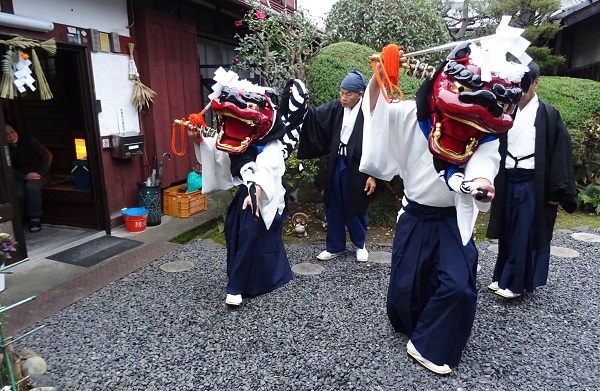
An Ise-daikagura troupe performing a lion dance as part of a ritual to ward off evil
(Ōtsu City, Shiga, Japan, 2018)
What inspired you to become a liberal arts communicator?
I was attracted by the role that liberal arts communicators can be an intermediary as scholars, in terms of sharing various knowledge to wide people. I have previously interviewed people in various positions, speaking with them in detail about their experience, knowledge, and insight surrounding the performing arts and traditional festivals, and relayed that information to general readers and to academia. So when I learned about the liberal arts communicator position, it felt like a perfect marriage between what I wanted to do and my previous endeavors.
Can you share some examples of your previous activities?
As a person who studies the performing arts, staging my own performances and producing shows have been important ways to present the output of my research. I have taken active part in international exchange projects, inviting Korean performers to Japan and co-producing music or folk art performances, and coordinating shows in Korea for Japanese performing art groups. (See video: Nikkan geinō kōryū kōen matsuri kurosshingu [Japan-Korea Performing Art Exchange Show “Matsuri Crossing”], 2015.) When showcasing a certain style of a performing art in a different cultural setting, audience members may be unable to appreciate the performance when they see the program without adequate supplementary information. I have always felt a strong need for “culture translators,” who arrange, explain, and set the stage based on an understanding of the cultural background of the audience. The network and communication methods that I built through interaction with local people—and the ideas that come to me naturally, thanks to my knowledge of both Korean and Japanese cultural backgrounds—have come in handy in that regard. Also, like most scholars in the humanities, I value long-term interchange with research subjects, so having us as intermediaries can sustain exchange projects that all too often end as one-off events.
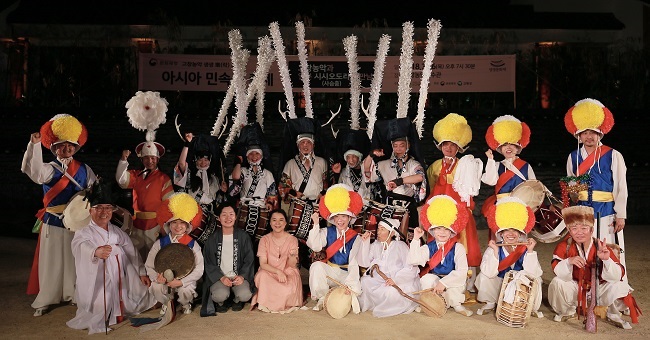
At a performance of the Iwate Maikawa Shishi-Odori and Tokyo Shishi-Odori teams, and the Gochang
Nongak Preservation Society troupe (Gochang County, North Jeolla, 2018)
How do you intend to further advance your research and what plans do you have as a liberal arts communicator?
I have so many projects that I want to do. In fact, I would like to know where to start. Senior scholars often point out that my themes are all over the place, but in my mind, they are all interconnected. I need to set up a framework to consolidate the projects and put together a persuasive presentation.
One ongoing endeavor is the publication of my doctoral dissertation, for which I am exploring ways to best communicate the diverse and dynamic nature of rhythm in Korean music. Another project is the National Museum of Ethnology’s Minpaku natsuyasumi kodomo wākushoppu [Minpakku Children’s Summer Workshop], which I will host in August. The program will feature Choi Jae Chol, a traditional Korean drummer and Korean resident in Japan as our guest, and invite children to virtually play together using drums made of cardboard boxes. For my research on Ise-daikagura, I am currently working on the National Museum of Ethnology Visual Ethnography and compiling footage that I recorded in fiscal year 2020 during the novel coronavirus pandemic. I also want to arrange a seminar sometime in the future to connect university students, scholars, and specialists of different fields. The global health crisis is still raging, but I hope to harness my experience to achieve compassionate and active exchanges of knowledge.
(Interviewer: Ayumi Hotta)
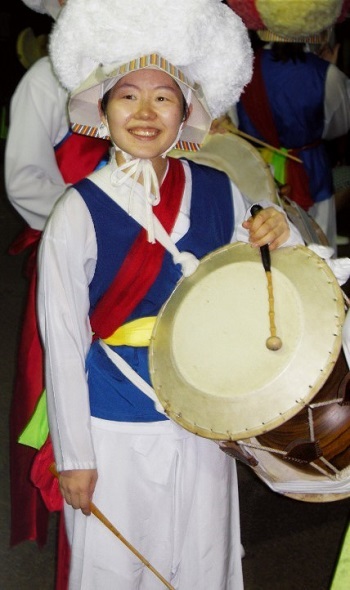
Chie Kamino Liberal arts communicator, National Institutes for the Humanities Center for Information and Public Relations Project assistant professor, National Museum of Ethnology. Kamino received her Ph.D. in musicology from the Graduate School of Musicology, Tokyo University of the Arts in 2017. After becoming a research fellow at the National Museum of Ethnology in 2018, she took up her present position in February 2021. Kamino’s research interests center on comparison between the folk performing arts played by professional traveling performers in Japan and Korea.
